Cappadocia has way more things to visit than they let on - Honeymoon Day 5 (Sun 10th June)
Our first night sleep in our cave was not fantastic - there was a women having a furious yelling conversation on her cellphone in a language we couldn't place, right outside our window for what felt like ages. Then, at 4am, the sound of dualing mosques. We seemed to be squarely in the middle between a pair of them, and their prayer chants were very loud and competing. This is a video I made on my phone of a similar prayer song, the non-4am version:
We were a little slow feeling but rapidly perked up during the incredible breakfasts offered by Hezen. Every day they have something different that's been freshly baked by one of their staff: pastries, breads etc.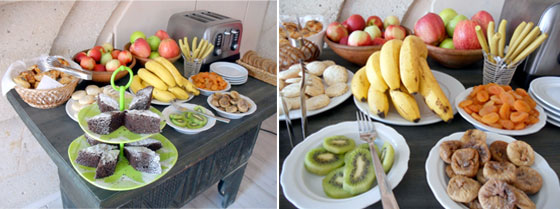 Pictures from the hote'ls website
Pictures from the hote'ls website
We'd had no idea just how many things there are to see and do in the region - plenty more than could be fit into the 3 days that we'd be there. This post is probably tedious and long because for my own memories I've chosen to note them all down.
On the suggestion of one of the managers at Hezen we hired a taxi who would take us around for the full day for a set fee. His name was something that sounded like Oor, he could speak barely any English, he had a big belly and an even bigger moustache, and he smiled a lot. It worked out perfectly.
First stop was one of Cappadocia's three underground cities. It is called Kaymakli and was built somewhere between the 6th and 10th centuries. There are apparently 7 or 8 floors, not all of which have been discovered yet (not sure how they know of those floors if they haven't discovered them yet though). The entire thing covers 2.5 kilometres which is quite a feat when you think about when they were digging it out.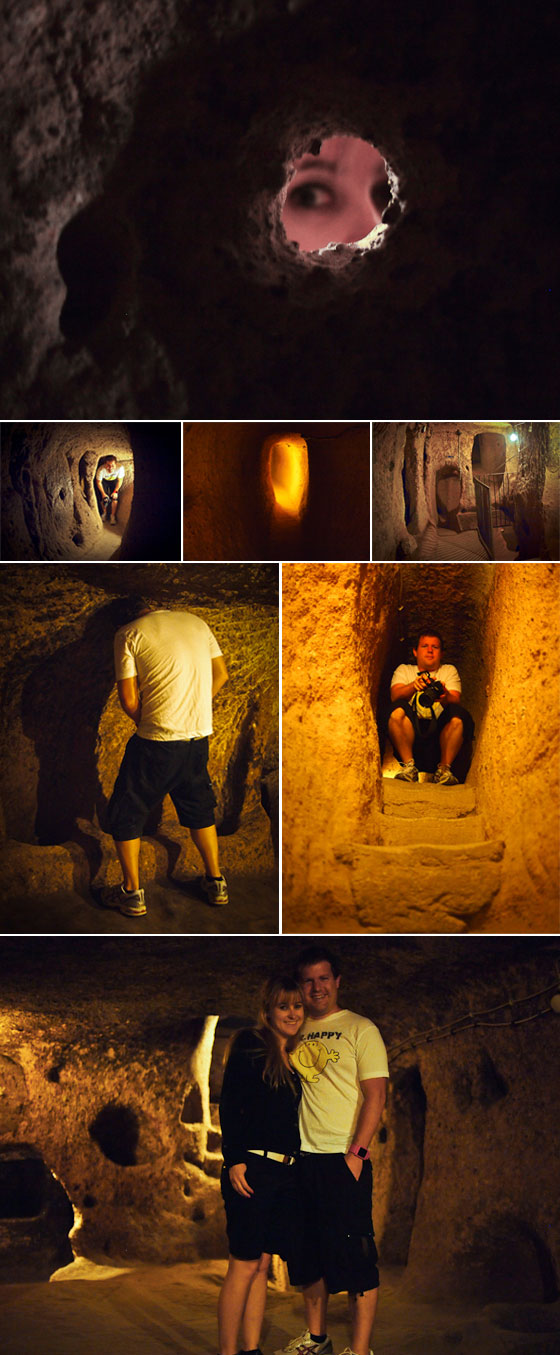
Next stop was a remote collection of cave churches up on a hill. We had to climb a very steep, slippery and scary set of steps to get to them. I haven't been able to work out what place this was. There wasn't anything else around here and we'd never have spotted the steps had the taxi driver not stopped and gestured for us to climb them. He just parked off in the shoulder of the road and waited there for us.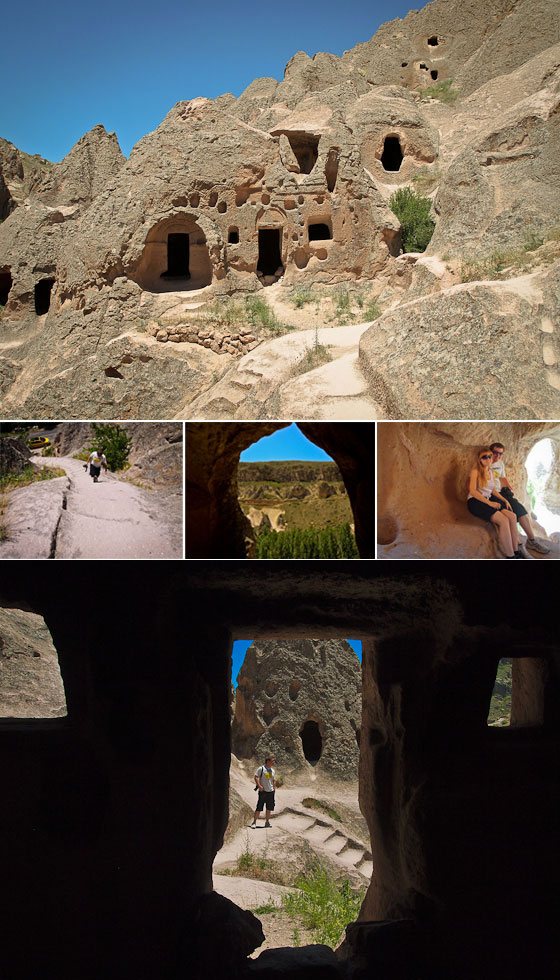
Third stop was a contained, protected valley called Soganli. There were six churches in this valley with a total walking distance of 2km between them. When we were dropped off by the taxi while he parked off and napped under a shady tree we were somewhat taken aback. Holy crap! You want us to walk 2km in the ridiculous blazing heat (35 degrees) to see 6 of the same thing?!. But we did it. Scott wore his jacket over his head for protection. We went to all of them, except for one called Snake Church. Which was strange because in between Snake Church and the next one we encountered an actual snake. The universe's way of reminding my conscience to ignore the heat and not be apathetic about the phenomenal structures we'd come all this way to see.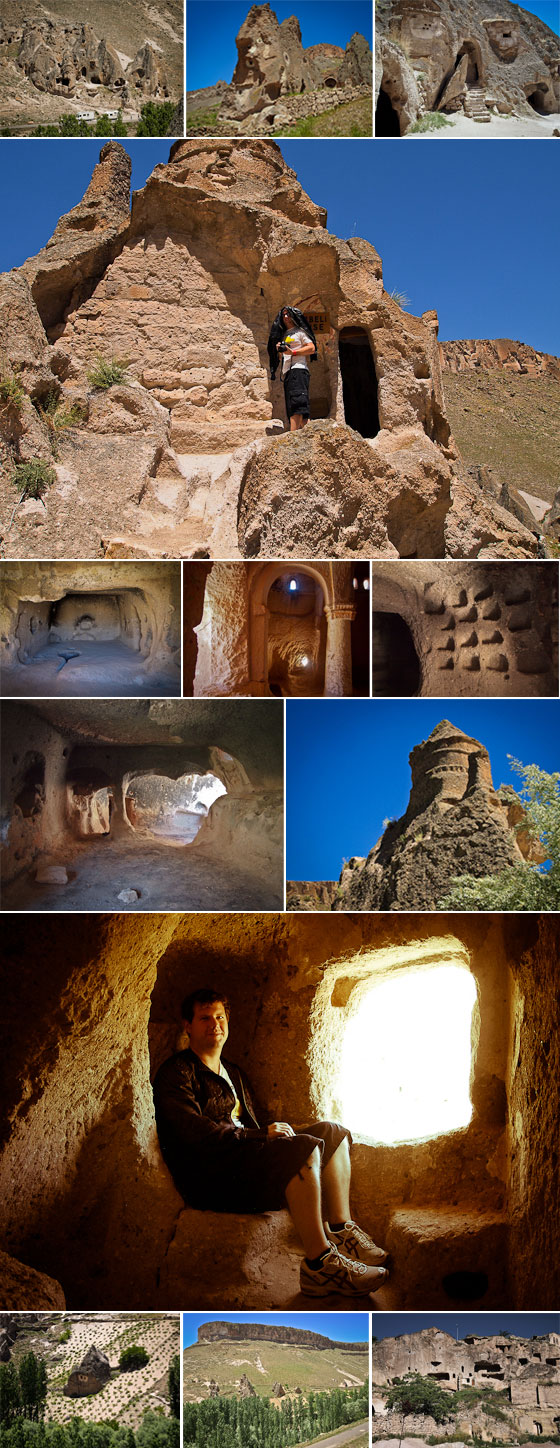
All of the old churches in Cappadocia that have wall and roof paintings inside them ('frescoes', which is a term I'd never encountered before this trip) had been deliberately vandalised. The churches and artworks were created by Christians. At a later stage Turkey became more Islamic (or as my guide book puts it, 'invaded by Arabs') and within that faith it was regarded as extremely disrespectful to depict holy figures like Jesus and Mary, so the faces on all the artworks (and sometimes hands and more) were scratched out. Other than the defacing, the artworks preserved quite well within the caves when you think about how old they are (more than ten centuries old sometimes), and the fact that they're partially exposed to light, extreme cold in winter (it snows and gets to -35 degrees Celsius) and extreme heat in the summer (35+ degrees Celsius). 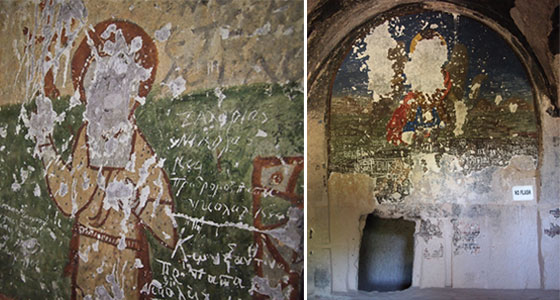
Also inside the caves, to my delight, was hundreds-of-years-old graffiti, alongside modern-day current graffiti. I guess people haven't changed much over time and still seek out the thrill of writing their name and a date on a building. At first we were wondering if the dates on the graffiti was real but after seeing enough of it we were certain that it was. Also, the styling of certain of the characters seemed to imply that they were from a different time (look at the number 9 in the example dated 1901). Funny to think that Johannesburg was not yet even founded when some of this etching was done.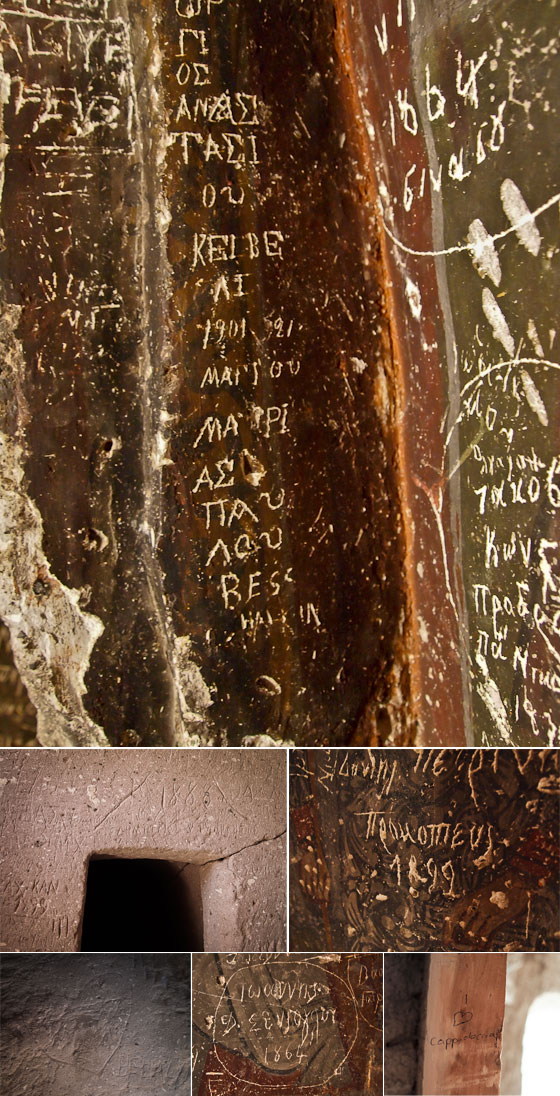
After suffering the 2km walk in the blazing heat (I realise how pathetic this sounds. But I swear… there were hills. And it was the middle of the day. And it was hot, very hot. And we'd walked a LOT in Istanbul) there was a small cave village we came to on the side of a hill. These same old structures that we'd been peering into, these people were living in. There were goats, and little patches of farm, a bee apiary and some small kids who stared us down like we were aliens, and then belted out, "Hello!". 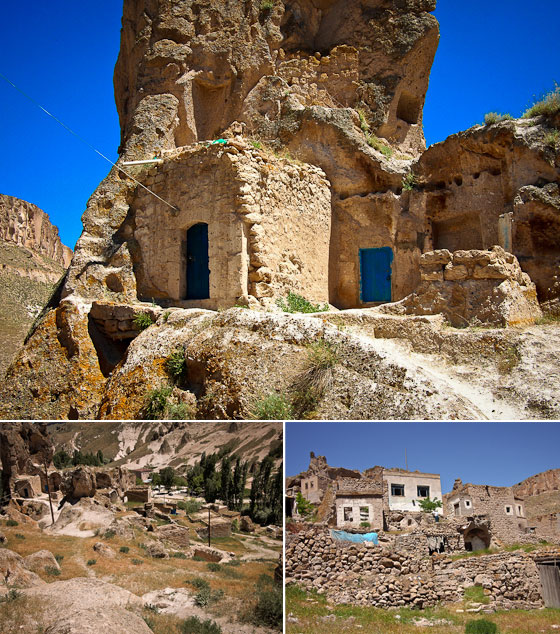
Lunch was in a restaurant just outside the entrance to the valley named "Cappadocia Restaurant". A name like this has made it tricky to search for online. I did find one lonely picture of a crate of apples though, and a review by someone who like us, found it to be unexpectedly incredible. It is run by a husband and wife team. Our table was set up outside in their apple orchard under one of the trees, and nearly everything that we ate had been either grown, made or harvested by the owner and his wife. The bread was fresh baked - crisp on the outside and soft and warm on the inside. It was served to us with cheese made by his wife with milk from their cow, and honey harvested from the apiary I mentioned before. I had wondered if it was goat's cheese before tasting it, and the owner explained in quite broken English that when their cow decided to come home once a day or so (apparently this is a free-range cow :P) his wife would milk her and make cheese and butter.
Definitely by this point in the day we were feeling saturated, but since we had a chaperone in the form of Oor there could be no sight-bunking. So off we soldiered to the antique city of Sobesos, a group of structures that a farmer accidentally discovered on his farm in the sixties and began excavating himself, which turned out to be from the 4th to 5th centuries AD. 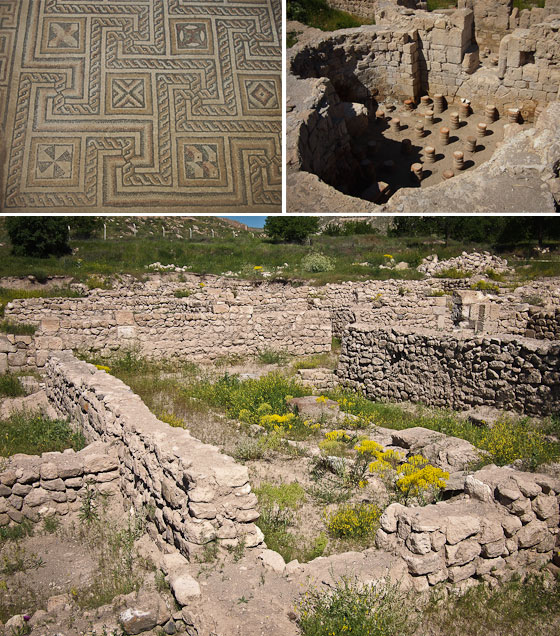
… then an ancient monastery and through the town of Mustafapasa (whose name we couldn't stop saying, and whose tourist sites had all shut for the day which we were lightly relieved about. At this point we were both exhausted and in silly moods not suited to be doing what we were doing):
Finally. Finally! The point we now needed rather than wanted - a stop in at a local winery called Turasan. I think that we've been spoilt by both the tasting experiences in Cape Town as well as our excellent wines. We were underwhelmed at the winery and impatiently fed through the tasting experience by their staff a bit like cattle. Cappadocia is Turkey's wine producing region and we had perhaps had our expectations in the wrong place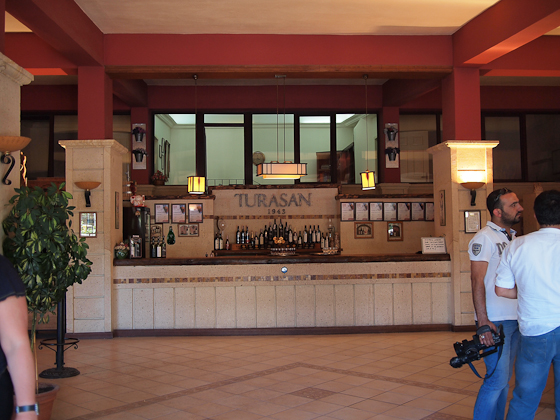
We were finally relieved of our sightseeing duties, and collapsed in a pile staring at the ceiling back at our hotel. Finally we pulled ourselves together and freshened up and went for a super meal at Ziggy Cafe, also recommended to us by the manager at Hezen, and the food and service were incredible. 
A very full, overwhelming, exhausting and wonderful day.
